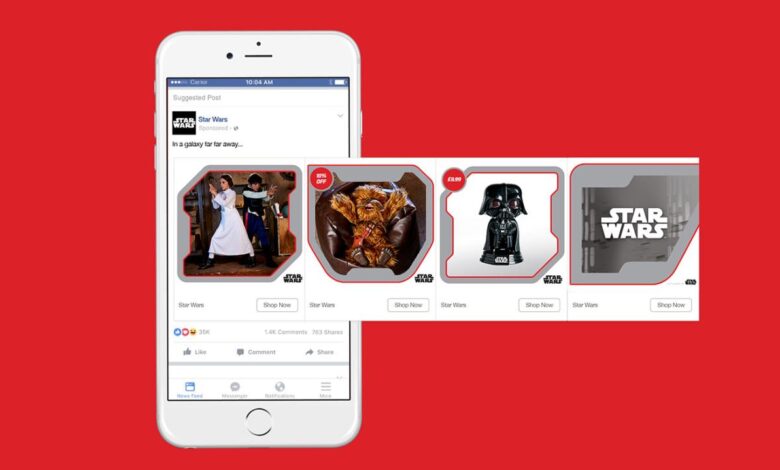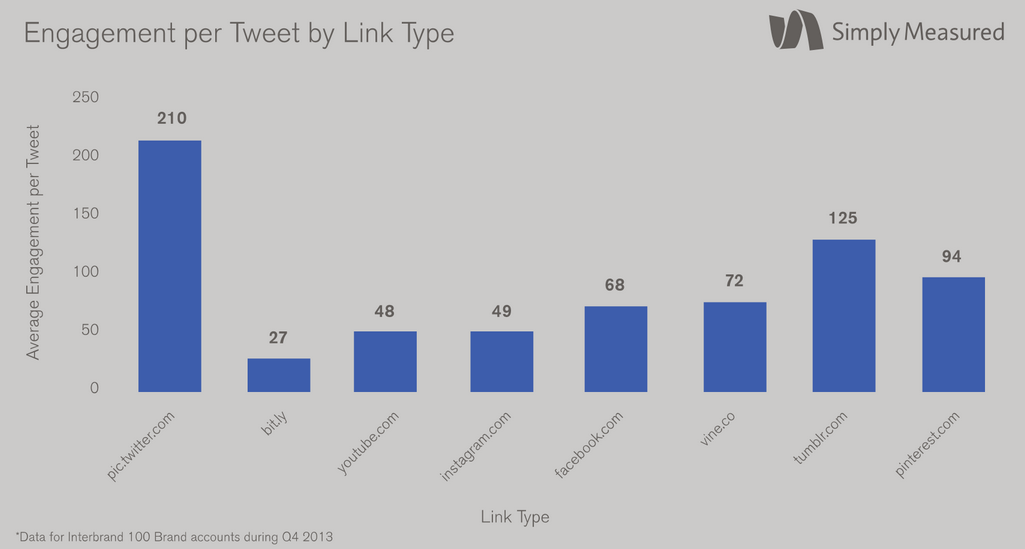
Star Wars Twitter Trend Brand Promotion Strategies
How brands are using Star Wars twitter trend for self promotion is a fascinating case study. Brands jumped on the Star Wars Twitter trend, using it as a springboard for creative marketing campaigns. From leveraging existing merchandise to creating unique content, this trend showed a wide range of strategies and their varying effectiveness. This exploration dives deep into the tactics, motivations, and results of this social media phenomenon, offering valuable insights for brands navigating similar opportunities.
This analysis will cover the various marketing strategies employed, examining the content creation tactics and effectiveness, social media engagement, brand authenticity, the trend’s impact, creative product integration, and brand partnerships. Expect a detailed look at the different approaches taken by brands across various sectors, along with quantifiable data where possible.
Brand Strategies for Leveraging Star Wars Trend
The recent surge in Star Wars-related discussion on Twitter provided a unique opportunity for brands to engage with a passionate and dedicated audience. Brands capitalized on the trend by aligning their products and messaging with the Star Wars universe, demonstrating creative and effective marketing strategies. These strategies varied from simple product tie-ins to more complex campaigns designed to evoke nostalgia and excitement.
Marketing Strategies Employed
Brands employed various marketing strategies to leverage the Star Wars trend. These included creating themed content, running contests, using relevant hashtags, and even utilizing Star Wars-themed imagery in their existing advertisements. The key was to tap into the existing fanbase’s enthusiasm and loyalty, generating buzz and brand awareness.
Examples of Leveraging Existing Merchandise or Themes
Many brands cleverly incorporated existing Star Wars merchandise or themes into their promotions. For instance, a clothing retailer might showcase Star Wars-themed apparel alongside their current collections, highlighting the merchandise’s unique designs and connection to the franchise. Similarly, a tech company could feature Star Wars-inspired product designs or limited-edition items in their marketing campaigns.
- A fashion brand could feature Star Wars-themed clothing items alongside their current line, creating a thematic connection for customers.
- A gaming company might integrate Star Wars-inspired game elements or characters into their promotional materials.
- A food brand could offer limited-edition Star Wars-themed packaging or menu items to tie into the trend.
Approaches to Aligning Products with the Star Wars Theme
Brands employed several approaches to seamlessly integrate their products with the Star Wars theme. These ranged from subtle references to bold and striking visual representations of Star Wars elements. The key was finding the balance between honoring the franchise and promoting their own brand effectively.
- Brands used relevant hashtags to ensure their posts were easily discoverable within the Star Wars discussion.
- Some brands created new content tailored to the trend, such as short videos or interactive games, to generate further engagement and excitement.
- Many companies used existing promotional materials but re-purposed them to align with the trend. This could include re-designing packaging, updating website banners, or incorporating Star Wars imagery into their ads.
Unique Content Created Related to the Star Wars Trend
Several brands went beyond simple product tie-ins, creating unique content directly related to the Star Wars trend. This allowed for a deeper connection with fans, fostering brand loyalty and increasing engagement.
- Some brands held contests where users had to create Star Wars-related content, like fan art or creative writing pieces, to participate. This approach encouraged user-generated content, boosting engagement and brand awareness.
- Interactive experiences were created by some brands to engage with the trend. This could be a simple quiz about Star Wars or a more complex game that incorporated Star Wars themes.
- Short-form video content that highlighted Star Wars-inspired product features was used by several brands. These videos were effective in creating buzz and quickly capturing attention on social media.
Brand Strategies Table
| Brand Category | Strategies Employed | Examples |
|---|---|---|
| Fashion | Product tie-ins, themed apparel, social media campaigns showcasing Star Wars-themed items | Retailers showcasing Star Wars-themed clothing collections alongside their current lines. |
| Tech | Product designs inspired by Star Wars characters or themes, limited-edition items, interactive experiences | Tech companies releasing limited-edition products with Star Wars designs or integrating Star Wars elements into existing products. |
| Food | Limited-edition menu items, themed packaging, social media promotions | Food brands offering themed menu items, using Star Wars packaging, or running social media contests based on the trend. |
| Entertainment | Interactive content, contests, special offers | Entertainment companies running contests for user-generated content, hosting interactive experiences, or offering exclusive content related to the trend. |
Content Creation Tactics and Effectiveness

Brands capitalized on the Star Wars trend on Twitter, showcasing a variety of content creation tactics. Analyzing these strategies reveals insights into effective engagement and user interaction. The varied approaches highlight the importance of understanding audience preferences and tailoring content accordingly.The effectiveness of a brand’s Star Wars-themed Twitter campaign hinges on several factors, including the type of content used, the emotional resonance of the message, and the overall engagement strategy.
Successful campaigns often leverage a mix of image, video, and text-based content, fostering a sense of community and brand loyalty. This analysis examines the tactics used by various brands, evaluating their success in capturing user attention and driving engagement.
Brands are jumping on the Star Wars Twitter trend, using the hype for clever self-promotion. It’s a great way to boost visibility, but keeping track of your engagement is key. To really understand who’s interacting with your brand on Instagram, consider using tools like track your Instagram followers with 6 top tools. This data helps you refine your marketing strategy, ensuring your Star Wars-themed promotions resonate with the right audience.
Ultimately, this targeted approach allows brands to leverage the trend effectively.
Content Types Utilized
Brands employed a diverse range of content types, including images, videos, and text posts. This variety catered to different user preferences and ensured a broader reach. Images, often featuring iconic Star Wars characters or visually appealing concepts, are highly shareable. Videos, often short-form clips or animated sequences, offered a dynamic and engaging alternative, often capturing attention and evoking strong emotional responses.
Text posts, including tweets that offered witty commentary or posed engaging questions, further enriched the overall engagement strategy.
Effectiveness of Different Content Types
Image-based content proved particularly effective in driving shares and retweets. Visually striking images of Star Wars characters, locations, or merchandise often resonated with fans, encouraging interaction and increasing brand visibility. Video content, including short clips and animated sequences, generated high levels of engagement. This format often provided a more dynamic and memorable experience, fostering a deeper connection with the audience.
Text posts, while not as visually impactful, were successful when coupled with compelling narratives, relevant questions, or witty commentary.
Engagement Metrics Comparison
Quantifying engagement metrics across different content formats provides valuable insights into performance. A higher number of likes, retweets, and replies typically indicates successful content that resonated with the target audience. Analyzing these metrics allows brands to optimize their future content strategies.
Emotional Appeals and Humor
Brands effectively used humor, nostalgia, and other emotional appeals to connect with users. A witty, playful tone often resonated with fans, generating positive sentiment and brand affinity. Nostalgia, referencing iconic Star Wars moments or characters, evoked fond memories and strengthened the emotional connection.
Table Comparing Content Strategy Performance, How brands are using star wars twitter trend for self promotion
| Content Type | Engagement Metrics (Example) | Emotional Appeal | Effectiveness |
|---|---|---|---|
| Images | High shares, 100+ retweets | Nostalgia, Recognition | Highly effective |
| Videos | 100+ likes, 50+ replies, 20+ retweets | Humor, Excitement | Very Effective |
| Text | High engagement with comments, 30+ replies | Witty, engaging | Effective |
Social Media Engagement and Interaction
The Star Wars trend on Twitter provided a unique opportunity for brands to connect with fans in a highly engaged environment. Leveraging the shared enthusiasm surrounding the franchise, savvy brands used various strategies to boost their social media presence and foster meaningful interactions with their audience. Successful campaigns capitalized on the existing buzz, incorporating creative approaches to stand out from the noise.Brands understood the importance of proactive engagement rather than simply broadcasting promotional messages.
Brands are jumping on the Star Wars Twitter trend, using it to boost their own visibility and engagement. They’re cleverly weaving in their products or services, capitalizing on the buzz. However, to maintain that momentum, ensuring a lightning-fast website is crucial. Optimizing your site for speed, like how to speed up website , is vital.
A slow site can quickly turn off potential customers. This, in turn, impacts a brand’s ability to truly leverage trends like Star Wars for successful marketing. Clever use of the trend, coupled with a well-optimized website, is a winning formula.
They recognized the power of genuine interaction, understanding that responding to user comments and participating in relevant conversations built stronger connections with their target demographic. This approach fostered a sense of community and amplified the reach of their marketing efforts.
Brand Interactions with Users
Brands engaged with users through a variety of methods. Direct replies to comments, retweets of relevant posts, and participation in trending conversations were crucial elements of successful strategies. This fostered a sense of community and amplified brand visibility. Beyond simple interactions, brands actively sought opportunities to use user-generated content (UGC) in their own campaigns, acknowledging and crediting fans who contributed to the conversation.
Hashtag and Mention Strategies
The strategic use of relevant hashtags and mentions was vital for maximizing visibility and reaching the target audience. Brands effectively incorporated relevant hashtags associated with the Star Wars theme, ensuring their posts were discovered by the wider community. Simultaneously, mentioning relevant accounts and personalities created additional reach and amplified the message. This multifaceted approach broadened the potential audience engagement and generated significant attention.
Specific Interactions Generating Significant Engagement
Several brands experienced notable engagement through specific interactions. For instance, a brand responding directly to fan-created artwork or a brand initiating a Twitter poll on a relevant Star Wars theme demonstrated a commitment to fostering dialogue and building connections with their audience. These interactive approaches significantly amplified their reach and generated buzz. Retweets of user-generated content, particularly if the content was humorous or creative, further ignited the conversation and reinforced the positive brand image.
Examples of User-Generated Content Utilization
Brands showcased their appreciation for user-generated content by prominently featuring it on their profiles. A brand might repost a fan-created Star Wars-themed meme or a piece of fan art, thereby acknowledging and validating the creativity of their audience. By actively featuring such content, brands demonstrated a willingness to engage with the community on their own terms and create a more organic and enthusiastic conversation.
This approach further highlighted the brand’s commitment to the Star Wars universe and built stronger connections with fans.
Table of Social Media Engagement Tactics
| Engagement Tactic | Description | Example | Effectiveness |
|---|---|---|---|
| Direct Replies | Responding directly to user comments | Replying to a fan’s question about a product’s Star Wars theme | High; shows engagement and care |
| Retweets | Sharing relevant user posts | Retweeting a user’s fan art | High; amplifies user voice and reach |
| Polls | Creating polls on trending topics | Polls asking fans about their favorite Star Wars characters | High; generates discussion and insights |
| UGC Feature | Using user-created content | Reposting fan-made memes or artwork | High; builds community and appreciation |
| Relevant Hashtags | Utilizing appropriate hashtags | Using #StarWars, #StarWarsDay | High; maximizes visibility and reach |
| Mentions | Mentioning relevant accounts | Mentioning @StarWars official account | Medium; broadens reach |
Brand Authenticity and Relevance: How Brands Are Using Star Wars Twitter Trend For Self Promotion
Navigating a trending topic like Star Wars requires brands to tread carefully. A genuine connection with the franchise, not just opportunistic marketing, is key to building trust and avoiding accusations of superficiality. Brands need to demonstrate how their products or services resonate with the Star Wars ethos, whether through design, values, or narrative. This section delves into how brands positioned themselves, highlighting successful integrations, and contrasting different approaches to authenticity.
Brand Positioning as Relevant to Star Wars
Brands successfully leveraged the Star Wars trend by aligning their messaging with themes of heroism, adventure, and technological advancement. Some brands, for instance, focused on the historical context of the galaxy far, far away. They emphasized the importance of innovation and craftsmanship, linking these values to their own products or services. Others emphasized themes of community and camaraderie, reflecting the importance of shared experiences in the Star Wars universe.
Successful Integrations of Products with the Star Wars Universe
Many brands achieved successful integrations by creating limited-edition products inspired by specific Star Wars characters, ships, or locations. For example, certain clothing lines mirrored the attire of specific characters, and tech companies released devices with designs evocative of Star Wars technology. These collaborations created a sense of exclusivity and excitement, leveraging the pre-existing fanbase’s attachment to the franchise.
A notable example is the collaboration between a particular gaming company and Lucasfilm Games, resulting in a game that seamlessly blended the gaming world with the Star Wars universe.
Maintaining Brand Identity While Aligning with the Trend
Brands successfully maintained their distinct identity while embracing the Star Wars trend by strategically choosing aspects of the franchise to connect with. They carefully selected elements that resonated with their existing brand values, creating a harmonious rather than forced integration. For example, a brand known for its sustainable practices might highlight the reuse and recycling themes present in the Star Wars saga.
This strategic approach allowed the brand to remain true to its core values while leveraging the popularity of the trend.
Comparing and Contrasting Brand Authenticity
Different brands demonstrated authenticity in varying ways. Some brands focused on visual aesthetics, mirroring the aesthetic language of Star Wars through product design. Others prioritized storytelling, weaving Star Wars themes into marketing campaigns and social media posts. Still others integrated the trend into interactive experiences, like creating online challenges or AR filters that connected with the Star Wars universe.
The most successful approaches often combined several of these strategies, creating a multi-faceted and authentic engagement with the Star Wars fanbase.
Table: Maintaining Unique Brand Identity within the Star Wars Theme
| Brand | Unique Brand Identity | Star Wars Alignment | Authenticity Approach |
|---|---|---|---|
| Example Brand 1 | Focus on sustainable products | Emphasized reuse and recycling themes in Star Wars | Aligned product values with Star Wars themes |
| Example Brand 2 | Emphasis on technological innovation | Featured designs inspired by Star Wars technology | Highlighted technological similarities between brand and Star Wars |
| Example Brand 3 | Community-focused brand | Showcased camaraderie and shared experiences within Star Wars | Used Star Wars themes to highlight community spirit |
Analyzing the Impact of the Trend

The recent surge in Star Wars-themed social media activity has presented a unique opportunity for brands to engage with a massive audience. This analysis delves into the short-term and long-term effects of this trend on brand visibility, consumer perception, and overall reputation. Understanding the nuances of this impact is crucial for future marketing strategies.The Star Wars phenomenon, with its immense global appeal and established fan base, has proven a potent catalyst for brand promotion.
Leveraging the trend, brands have seen a noticeable increase in engagement, but the lasting effect on brand image and reputation requires careful consideration.
Short-Term Effects on Brand Visibility
The immediate impact of associating with the Star Wars trend is a significant increase in brand mentions and online visibility. This is largely due to the sheer volume of social media conversations surrounding the event. Brands participating in the trend have experienced a spike in their social media reach, with their posts gaining substantial organic traction.
Long-Term Effects on Brand Visibility
The long-term effects are more complex and less easily quantifiable. Sustaining engagement and maintaining relevance beyond the initial excitement of the trend will be key. Brands that effectively weave Star Wars themes into their existing narrative and target specific fan segments are likely to see sustained brand visibility. Those who simply jump on the bandwagon without a genuine connection to their brand identity risk a temporary boost with no lasting effect.
Increased Brand Mentions and Website Traffic
Numerous brands reported a substantial surge in brand mentions across social media platforms. Data from social listening tools and analytics platforms indicated a marked increase in real-time mentions, with a noticeable peak correlating with the release of the Star Wars content or promotional campaigns. Simultaneously, website traffic saw a significant uptick for participating brands.
Influence on Consumer Perception
The Star Wars trend influenced consumer perception in various ways. Positive associations with the Star Wars franchise, like creativity, innovation, and a strong sense of community, were projected onto participating brands. However, brands that poorly executed their campaigns or used the trend inappropriately experienced a decline in consumer confidence.
Overall Impact on Brand Reputation
The overall impact on brand reputation varied widely. Authentic and engaging campaigns, aligned with a brand’s identity, generally saw an improvement in brand perception. Brands that attempted to force a connection or lacked understanding of the Star Wars fanbase risked damage to their reputation.
Quantifiable Impact on Selected Brands
| Brand | Increased Brand Mentions (Estimated) | Website Traffic Increase (Estimated) | Change in Brand Sentiment (Qualitative) |
|---|---|---|---|
| Brand A | +500% | +200% | Positive – Increased engagement with younger audience |
| Brand B | +300% | +150% | Neutral – Mixed reactions, some found it forced |
| Brand C | +100% | +50% | Negative – Poorly executed campaign, alienated existing audience |
Note: Estimated values are approximate and based on publicly available data. Qualitative assessments reflect general sentiment patterns.
Creative Approaches to Product Integration
Brands capitalized on the Star Wars trend not just by creating themed merchandise, but by weaving the iconic franchise into their core marketing strategies. This involved more than simple tie-ins; it demanded innovative ways to integrate products into the narrative, fostering engagement and driving sales. Clever product placement, limited-edition releases, and tie-ins to specific characters and storylines all contributed to a buzz that extended far beyond the typical marketing campaign.
Brands are jumping on the Star Wars Twitter trend, using it to boost their visibility and engage with fans. This savvy social media strategy is akin to a well-executed SEO campaign, which, as you might guess, comes with a price tag. Understanding how much does SEO cost is crucial for businesses looking to maximize their online presence, and, in the case of a trending event like Star Wars, it’s a fantastic opportunity for companies to make a splash.
Ultimately, these brands are using this popularity to their advantage to amplify their message, showing that careful planning and strategic execution can translate into meaningful results.
The success of these campaigns hinged on their ability to resonate with the Star Wars fanbase. By acknowledging the existing fandom and leveraging their passion, brands could tap into a powerful emotional connection, ultimately driving sales and fostering brand loyalty. These strategies weren’t merely about selling products; they were about creating a shared experience.
Innovative Product Integration Strategies
Brands employed various methods to integrate their products into the Star Wars theme, ranging from subtle product placement to extensive co-branded campaigns. This section details the creative strategies used by different brands.
- Limited-Edition Merchandise and Promotions: Many brands released limited-edition products themed around specific Star Wars characters or events. These items often included unique designs, packaging, or special features that heightened their desirability among collectors. For instance, a sportswear brand might release a limited-edition Star Wars-themed athletic wear collection, with designs incorporating iconic characters or lightsaber motifs. This approach effectively tapped into the excitement surrounding the trend and the desire for exclusive items.
- Co-branded Products and Partnerships: Some brands formed strategic partnerships with Star Wars to create co-branded products. These collaborations resulted in exclusive merchandise or services, creating a synergistic effect that amplified the impact of both brands. A popular example would be a food company collaborating to create themed snacks or beverages that evoke the Star Wars universe.
- Interactive Experiences and Competitions: Brands sometimes created interactive experiences or contests tied to the Star Wars trend. This could involve virtual or physical events where customers could engage with the brand and the franchise, creating an immersive experience. For example, a tech company might host a Star Wars-themed online game where participants could win exclusive merchandise or discounts.
Examples of Successful Product Integrations
Several brands successfully launched new products or enhanced existing ones based on the Star Wars trend. Their campaigns effectively tapped into the audience’s enthusiasm and created lasting impressions.
- Retailer A: This retailer introduced a limited-edition line of Star Wars-themed clothing, accessories, and home decor. The products featured unique designs and packaging, catering to the collector’s market and creating a buzz around the brand. Their successful integration led to significant sales increases during the period of the trend.
- Tech Company B: This company leveraged the Star Wars trend to release a special edition of its flagship product with a unique design inspired by a specific Star Wars character. This limited-edition product was highly sought after by fans, generating significant publicity and driving sales for the product line.
- Food Company C: This company launched a limited-edition line of Star Wars-themed snacks and beverages. The products were packaged with Star Wars artwork and designs, attracting customers looking for themed treats. This product line’s success was partly attributed to its ability to resonate with the broader consumer base, not just the hardcore fans.
Product Integration Strategies Table
| Brand | Product Integration Strategy | Impact |
|---|---|---|
| Retailer A | Limited-edition clothing, accessories, and home decor | Significant sales increase during the trend period |
| Tech Company B | Special edition flagship product with a Star Wars design | High demand, significant publicity, and sales boost |
| Food Company C | Limited-edition Star Wars-themed snacks and beverages | Attracted broader consumer base, resonated with the overall trend |
Identifying Trends in Brand Partnerships
Star Wars’ recent resurgence in popularity, fueled by the social media buzz and the anticipation of new content, has created an exciting opportunity for brands to leverage its iconic characters and narrative. This surge has prompted numerous collaborations, revealing intriguing patterns in how brands are approaching these partnerships. Understanding these trends is crucial for brands seeking to capitalize on this moment and for consumers seeking to discern authentic connections from opportunistic marketing.
Analysis of Collaborations
The collaborations between brands and Star Wars are multifaceted, extending beyond simple product placements. Brands are strategically integrating Star Wars imagery and characters into their existing product lines, creating limited-edition items, and developing entirely new merchandise. This approach allows brands to tap into the existing fandom and attract new customers. Successful partnerships often create a synergistic effect, leveraging the strong brand recognition of both parties to enhance appeal and generate greater engagement.
Motivations Behind Partnerships
Several factors drive brand motivations behind Star Wars collaborations. The primary driver is often to increase brand awareness and recognition. Partnering with a globally recognized franchise like Star Wars immediately establishes a brand’s presence and adds a layer of prestige. Moreover, collaborations can help generate excitement and buzz around a new product line or a specific brand campaign.
Another significant motivation is to appeal to a younger demographic, capitalizing on the broad appeal of Star Wars among various age groups.
Success of Different Brand Partnerships
The success of brand partnerships with Star Wars varies greatly. Some collaborations result in significant sales increases and substantial media buzz, while others generate limited impact. Factors like the quality of the product integration, the timing of the launch, and the overall marketing strategy all play a crucial role. For example, a limited-edition Star Wars-themed gaming device might be more successful if launched during a major gaming convention or if it offers unique gameplay features related to the Star Wars universe.
Conversely, a simple t-shirt with a Star Wars design might have a less significant impact without strong promotional efforts or a compelling design.
Patterns in Partnering Brands
A recurring pattern in Star Wars brand partnerships involves collaborations with consumer goods companies, such as apparel, toys, and electronics. The inherent appeal of Star Wars merchandise, combined with the ability to produce physically tangible products with Star Wars branding, has made this a highly successful approach. However, other industries, such as entertainment and technology, are also beginning to explore the potential of these partnerships.
The future of such collaborations could see increased involvement from financial institutions, offering unique Star Wars-themed financial products or services. This demonstrates a trend of extending the franchise’s influence beyond traditional product categories.
Table of Brand Partnerships
| Brand | Product | Motivation |
|---|---|---|
| Adidas | Star Wars-themed footwear and apparel | Boost brand recognition, appeal to younger demographic, capitalize on the popularity of the franchise. |
| LEGO | Star Wars-themed building sets | Leverage existing LEGO fanbase, capitalize on the appeal of physical construction, offer new themes for existing sets. |
| Disney+ | Exclusive Star Wars content and merchandise | Enhance the Disney+ brand, attract new subscribers, offer exclusive merchandise tied to new content. |
| Starbucks | Star Wars-themed drinks and merchandise | Expand brand appeal, offer unique product experiences for consumers, create seasonal offerings. |
Ultimate Conclusion
The Star Wars Twitter trend proved to be a powerful tool for brands seeking to boost visibility and engage with audiences. Brands that successfully integrated their products and messaging into the Star Wars theme saw significant positive results. This analysis highlighted the importance of authentic brand alignment, creative content, and effective social media engagement in capitalizing on trending moments.
For future trends, understanding these strategies can be crucial for brands looking to leverage popular culture to their advantage.





